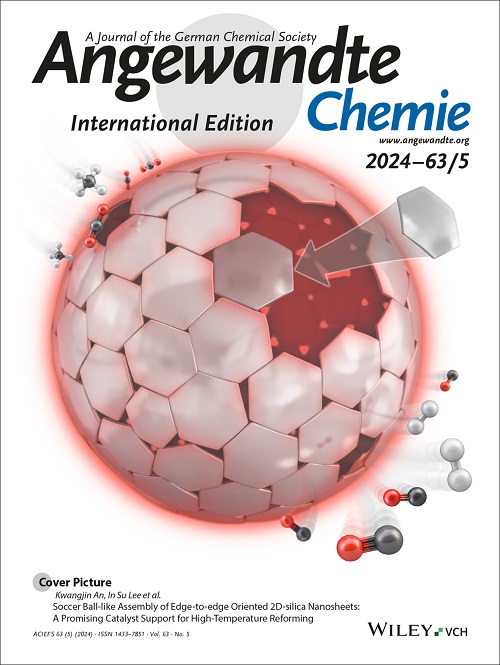H-Bonds in Carbon Quantum Dot-anchored C3N5 to Boost Proton-Coupled Electron Transfer for Piezoelectric-Driven Hydrogen Peroxide Synthesis under Ambient Conditions
IF 16.1
1区 化学
Q1 CHEMISTRY, MULTIDISCIPLINARY
引用次数: 0
Abstract
Tuning proton-coupled electron transfer (PCET) is a promising strategy to boost the oxygen reduction reaction (ORR) for H2O2 synthesis, but the slow transmission rate of protons and electrons to active sites remains a significant bottleneck. To address this, we developed an H-bond-driven PCET process based on carbon quantum dotanchored C3N5 (CQDs-C3N5) for piezo-catalytic H2O2 synthesis. CQD-C3N5 exhibited a remarkable piezo-catalytic synthesis rate of 5025 μmol g⁻¹ h⁻¹ under ambient conditions. This efficiency is attributed to H-bonds between CQDs and C3N5, which accelerate PCET in the ORR. The piezoelectric-generated charges, from the dipole field of the C3N5 plane and protons in water, were rapidly transferred to the C rings of CQDs via H-bonds. This process facilitated the adsorption of oxygen onto C2 sites adjacent to carboxyl groups of CQDs, which in turn led to the formation of H2O2 through a rapidly protonated, indirect 2e− pathway. Additionally, a piezo-self-Fenton reaction system was constructed for oxytetracycline-rich wastewater purification, with effectively effects on chemical oxygen demand, antibiotic-resistant bacteria and antibiotic-resistant genes degradation. This study highlights the critical role of H-bond networks for tuning PCET in the ORR and provides a comprehensive understanding for the precise control of catalytic reaction kinetics through molecular structural engineering.求助全文
约1分钟内获得全文
求助全文
来源期刊
CiteScore
26.60
自引率
6.60%
发文量
3549
审稿时长
1.5 months
期刊介绍:
Angewandte Chemie, a journal of the German Chemical Society (GDCh), maintains a leading position among scholarly journals in general chemistry with an impressive Impact Factor of 16.6 (2022 Journal Citation Reports, Clarivate, 2023). Published weekly in a reader-friendly format, it features new articles almost every day. Established in 1887, Angewandte Chemie is a prominent chemistry journal, offering a dynamic blend of Review-type articles, Highlights, Communications, and Research Articles on a weekly basis, making it unique in the field.

 求助内容:
求助内容: 应助结果提醒方式:
应助结果提醒方式:


